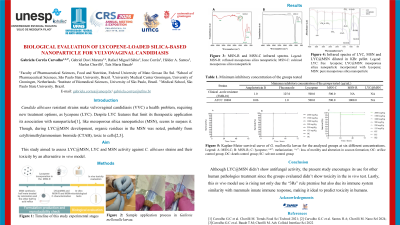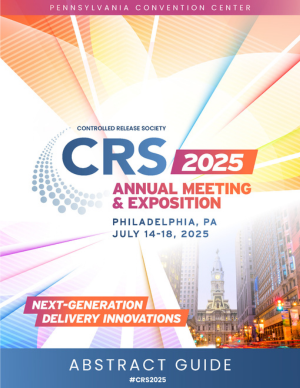Nanomedicine and Nanoscale Delivery (Focus Group - NND)
(291) Biological evaluation of lycopene-loaded silica-based nanoparticle for vulvovaginal candidiasis

Introduction: Candida albicans resistant strains make vulvovaginal candidiasis (VVC) a health problem, requiring new treatment options, as lycopene (LYC). Despite LYC features that limit its therapeutic application its association with nanoparticles[1], like mesoporous silica nanoparticles (MSN), seems to surpass it. Though, during LYC@MSN development, organic residues in the MSN was noted, probably from cetyltrimethylammonium bromide (CTAB), toxic to cells[2,3]. This study aimed to assess LYC@MSN, LYC, MSN and CTAB activity against C. albicans strains and their toxicity by an alternative in vivo model.
Learning Objectives:
- understand that LYC@MSN comprises a safe option to human pathologies treatment.
- reflect on CTAB residue impact in the efficiency and safety of a controlled drug release system.
Gabriela Corrêa Carvalho, Dr. – Visiting researcher, São Paulo State University; Gabriel Davi Marena, Dr. – Pos doc, University of Sao Paulo; Rafael Miguel Sábio, Dr. – Pos doc, São Paulo State University; Ione Corrêa, Dr. – Professor, São Paulo State University; Hélder A. Santos, Dr. – Professor, University Medical Center Groningen; Marlus Chorilli, Dr. – Professor, São Paulo State University; Taís Maria Bauab, Dr. – Professor, São Paulo State University

Gabriela Corrêa Carvalho (she/her/hers)
Temporary professor
Federal University of Mato Grosso do Sul, Sao Paulo, Brazil

